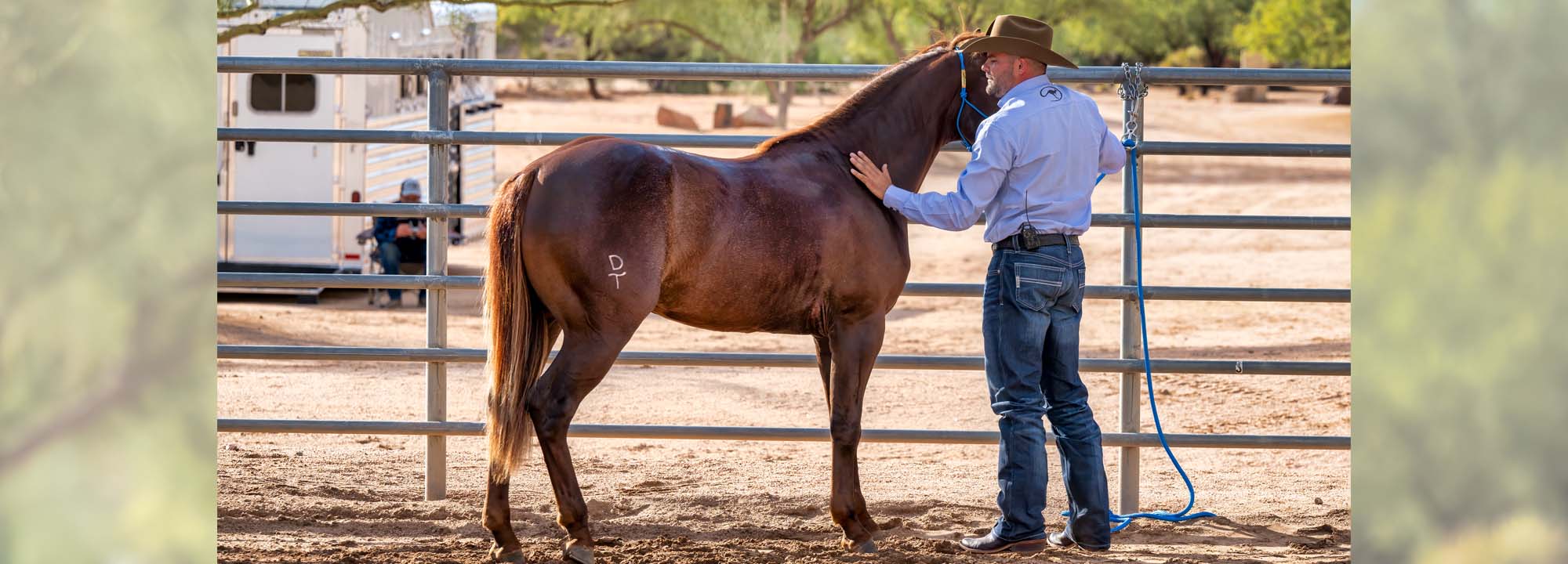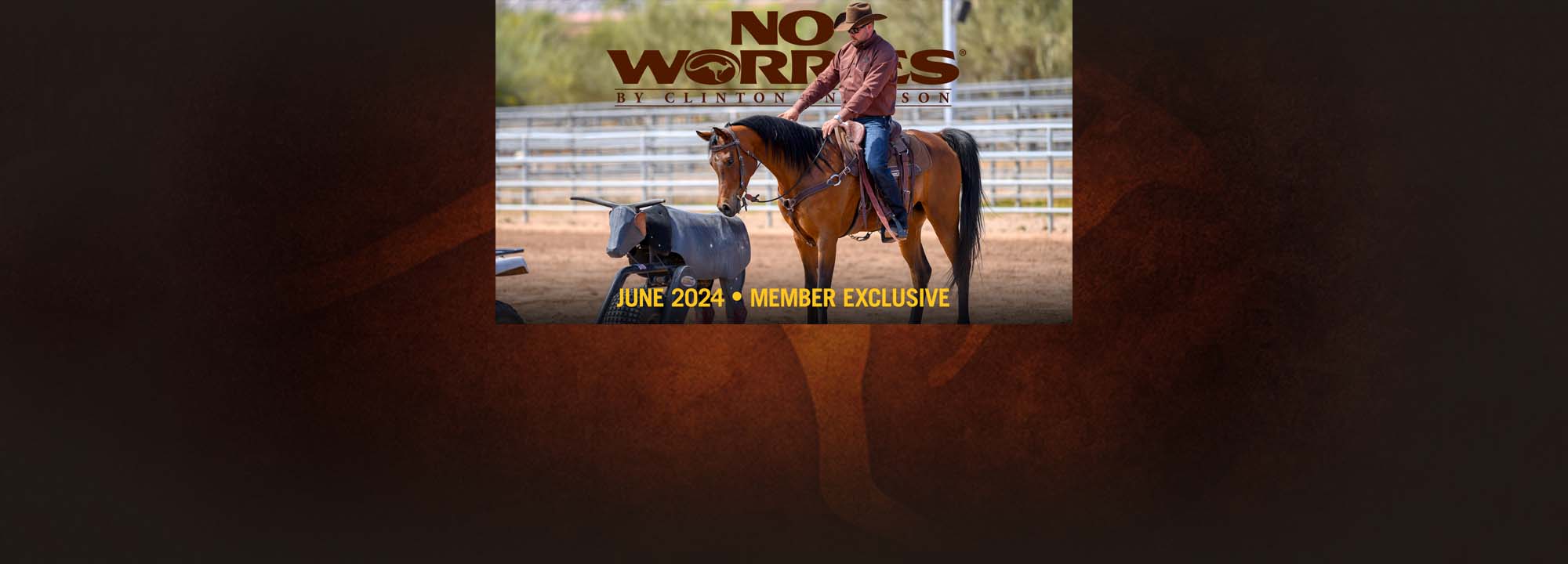Before you teach a horse how to stand tied up, he has to be prepared for the experience, meaning that he knows how to soften and yield to pressure. I prepare my horses to be tied up by teaching them the Fundamentals groundwork exercises. When I’m confident that the horse understands that when he feels pressure from the halter behind his poll he needs to move forward off of it rather than resist it, then I work on teaching him to tie.
When teaching a horse how to stand quietly while he’s tied up, I always recommend using the Aussie Tie Ring. It’s a great tool that makes tying as safe as possible and teaches a horse to stand calmly because it lets the horse move his feet. While the groundwork and training we do decrease the chances of the horse pulling back and fighting the pressure while tied, they don’t guarantee that he will never pull back. That’s where the tie ring becomes an invaluable training tool. When a horse does pull back on the Aussie Tie Ring, he is able to pull the rope through the ring, and as soon as he stops pulling back, he is instantly rewarded because slack is created in the lead rope. That causes the horse not to panic as much.
When he’s using the reactive side of his brain, the more the horse pulls against pressure and can’t escape it, the more he wants to fight. When a horse pulls back and is actually able to move his feet, it’s as if he says to himself, “There’s no reason to keep fighting because I’m able to move my feet. There’s no need to feel trapped and claustrophobic.”
That’s the difference between the Aussie Tie Ring and bungee cords, inner tubes and whatever else people use to tie their horses with. The problem with bungee cords or inner tubes is when the horse stops pulling back, he doesn’t receive an instant release of pressure. Instead, he has to go all the way back up to the fence or whatever he’s tied to before there’s any slack in the rope and the pressure behind his ears is taken away. With the tie ring, as soon as he stops pulling, all of the pressure is released. Every time he stops pulling back, he receives a small reward. With the tie ring, horses actually teach themselves not to pull back.
Once a horse has been taught to stand tied using an Aussie Tie Ring, then I tie him up using a Patience Pole. A Patience Pole is a steel pole set in concrete that has a hub at the top. Welded to that is a solid tube that extends down about a foot and has a loop at the end for attaching the horse’s lead rope or a heavy-duty chain.
The idea behind a Patience Pole is that if the horse walks around the pole, the hub spins around. So if a horse gets nervous and wants to move, he is free to move his feet, but instead of walking off, he just goes around in circles. After a while, the horse realizes that no matter how much he moves, he’s never, ever going to get anywhere, so he might as well stand still and relax.
Have a horsemanship question or looking for more training tips? Check out the No Worries Club.





